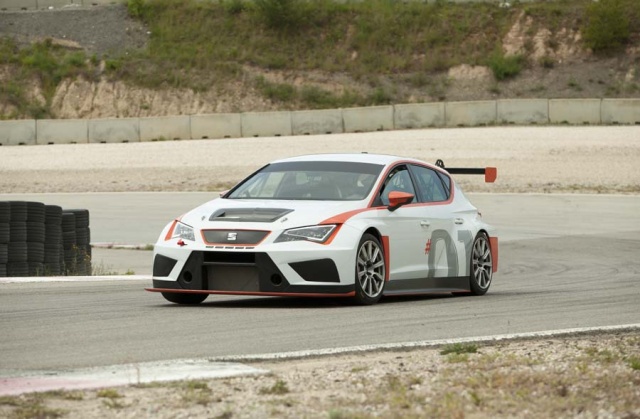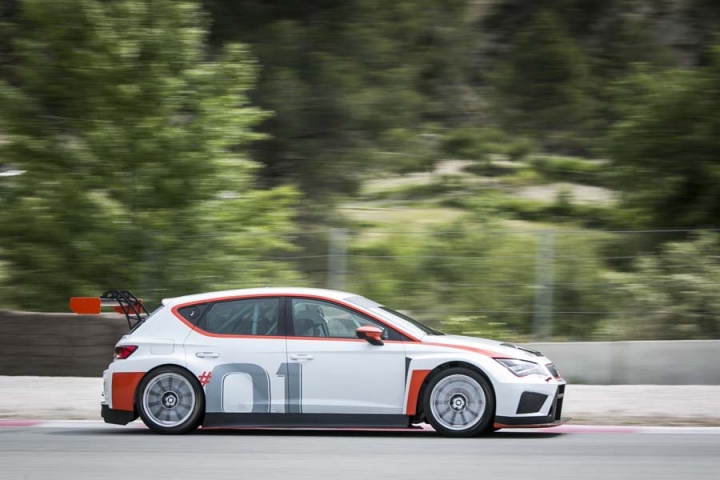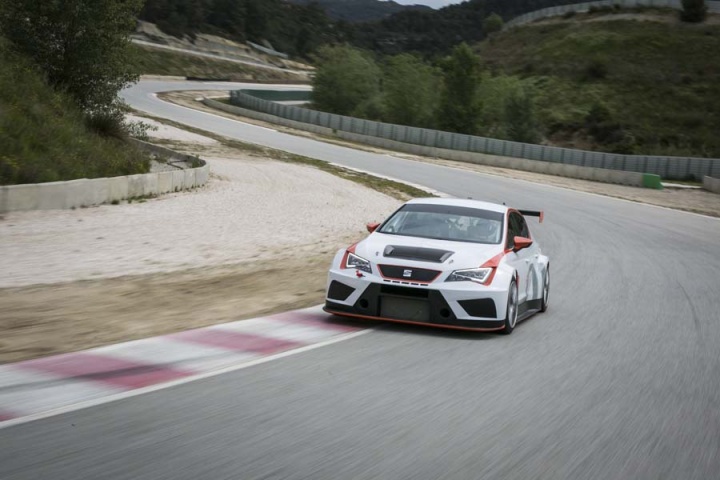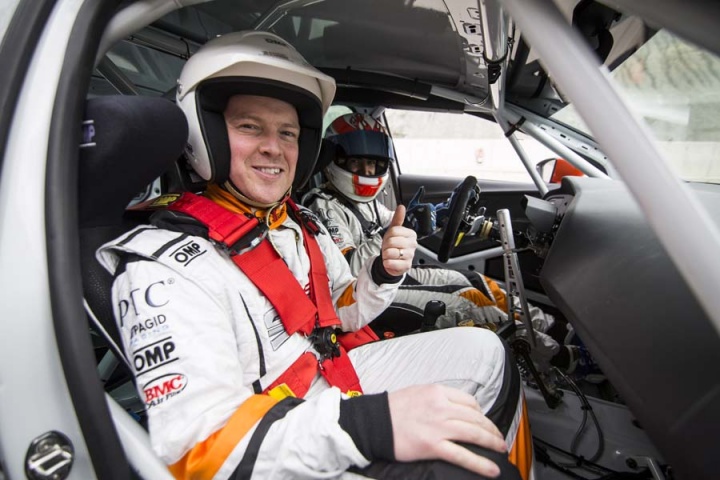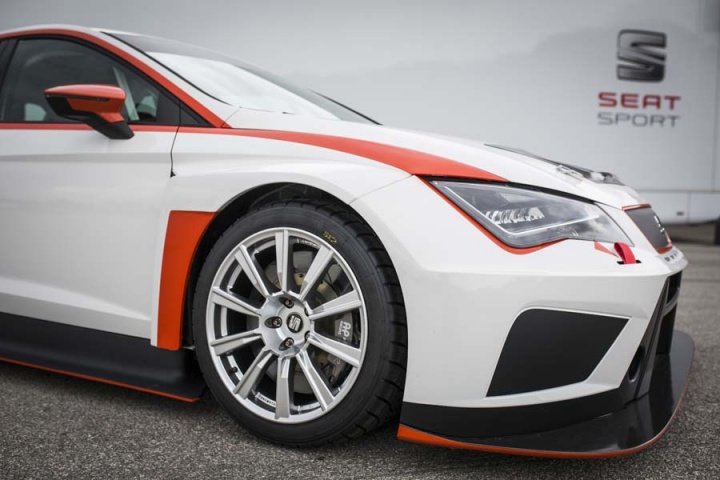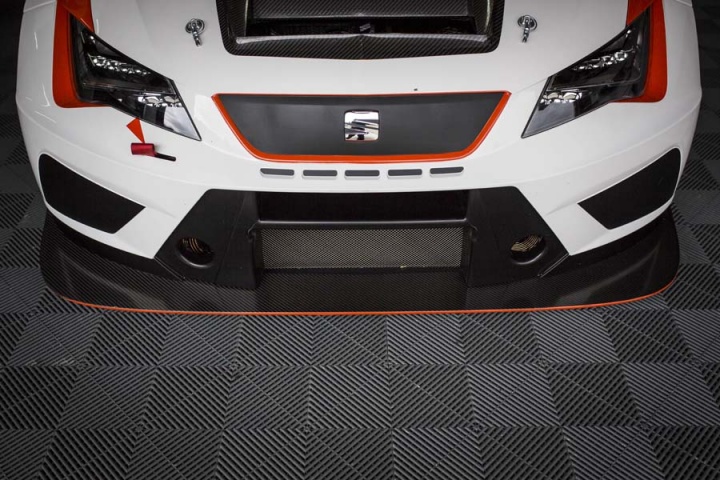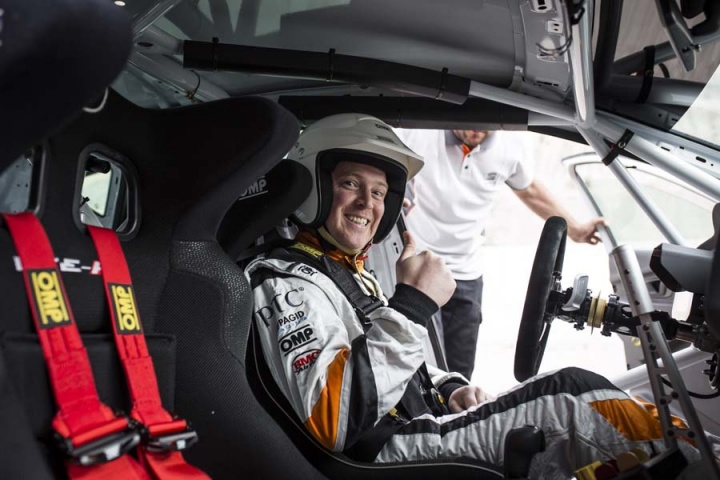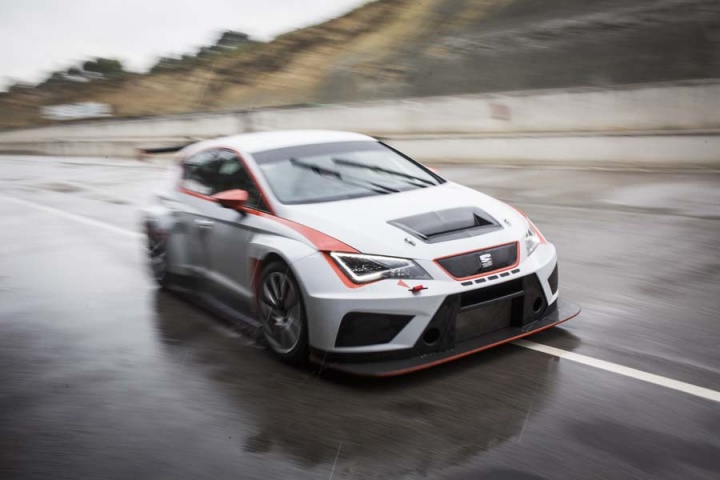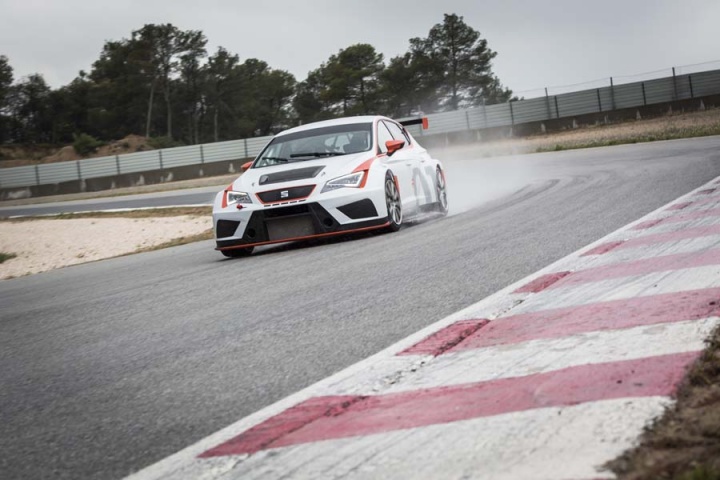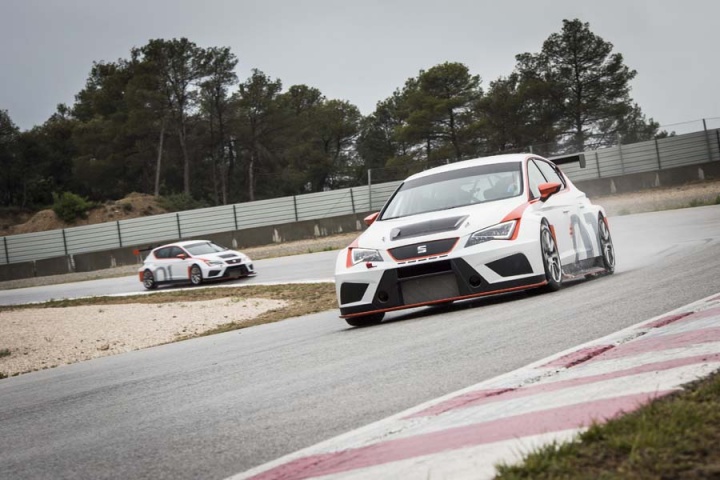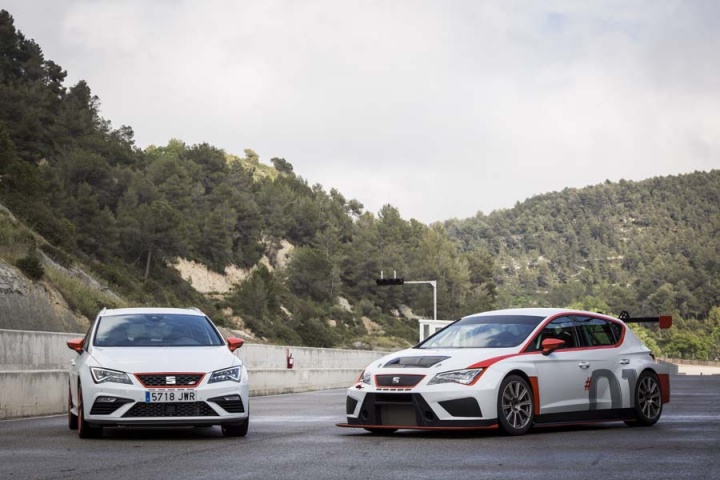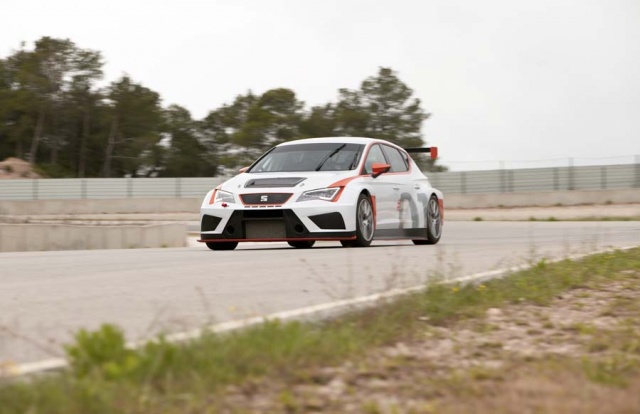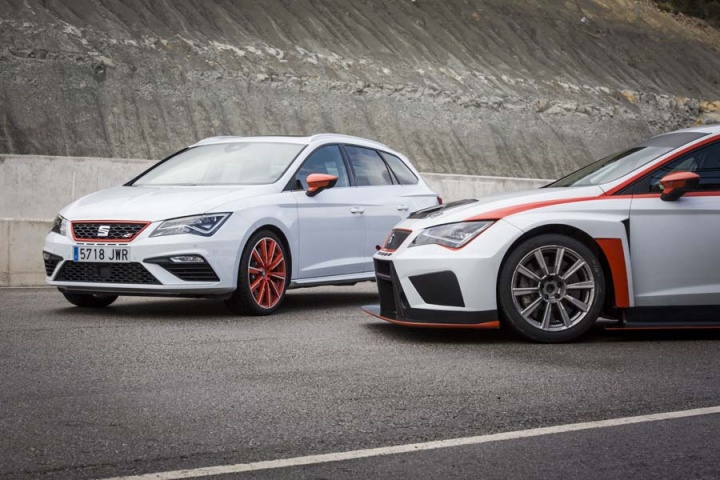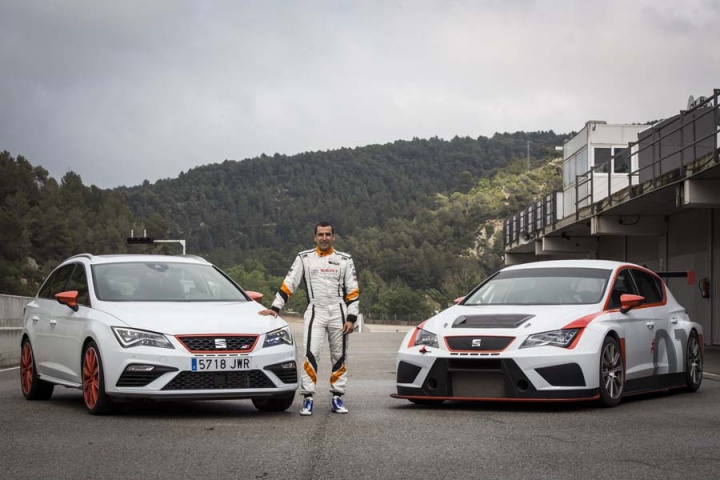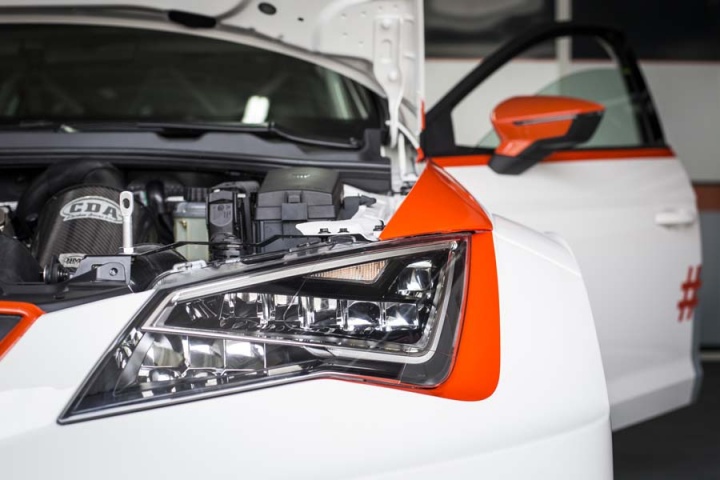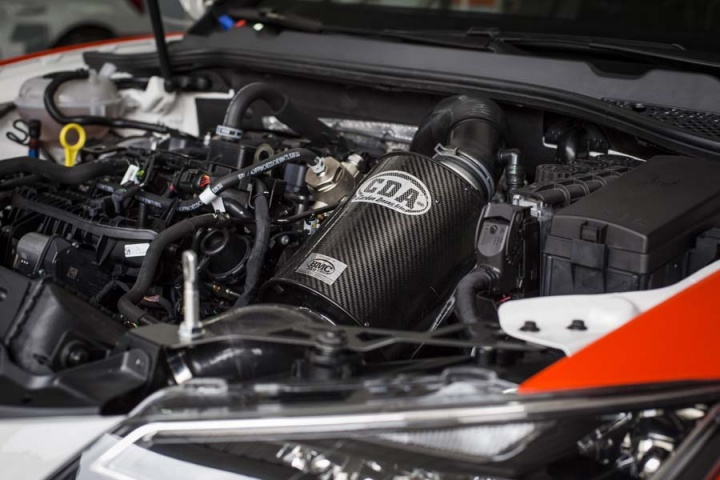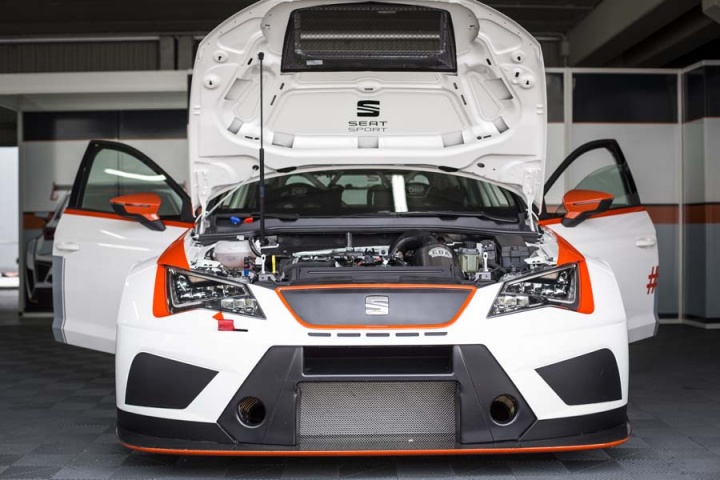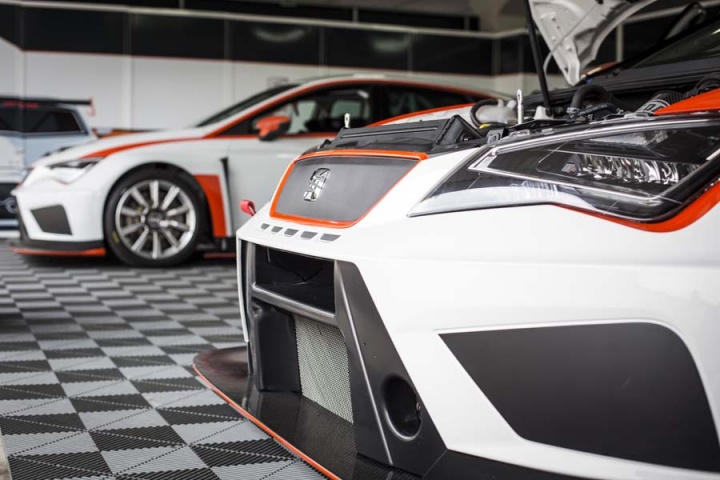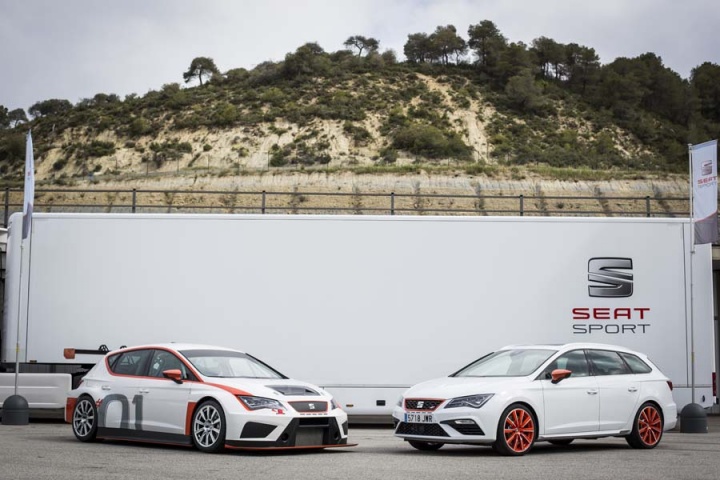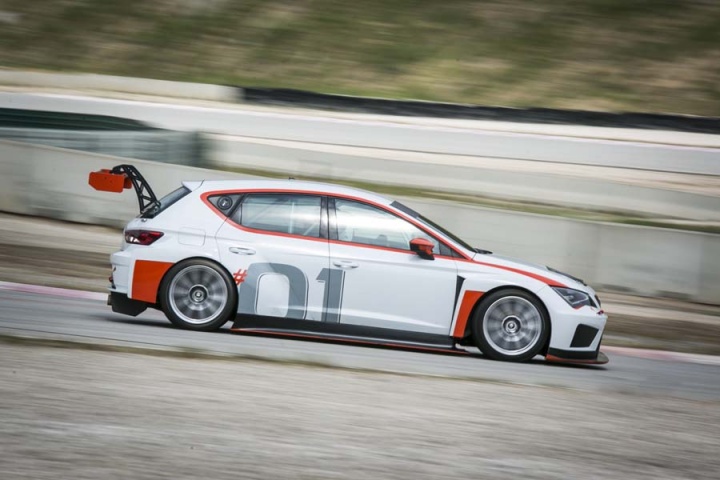Reckon you'd like to try your hand at some serious motorsport? SEAT has just the answer.
"Downforce increases with the square of speed. Downforce increases with the square of speed." I repeat this mantra to myself as I approach the next turn at nigh on 180km/h, knowing in my head that the rear spoiler is adding 100kg of weight to the car, while the front splitter balances it out with about 60kg of its own. Knowing something and trusting your life to the science of it are two very different things indeed...
I'm at the Parcmotor Castellolí circuit about an hour northwest of Barcelona in Spain and at the wheel of the rather serious looking SEAT Leon Cup Racer. SEAT Sport's racing driver, Jordi Gené, earlier drove me around the place for a few laps to show me how it's really done, then vacated the hot seat and waved me off on my own. Just me and my misgivings about the trustworthiness of aerodynamic downforce.
I needn't have worried, of course, as the SEAT Leon Cup Racer has been developed to be driven by mere mortals. Xavier Carrasquicca, Sales Manager, SEAT Sport, earlier told me that, despite the wild appearance, it is not really an aero car, as it is for customer racing and while the full motorsport experience is undoubtedly on offer, there are priorities other than making the Leon as fast as physically possible. It must be relatively easy to drive and costs have to be kept down. Carrasquicca reckons the Leon Cup Racer costs about €8 per kilometre of racing, which isn't bad given the performance on tap.
To keep a lid on costs, the Cup Racer shares a remarkable amount with the SEAT Leon Cupra 300 road car. We witness five-door shells being reinforced at the SEAT Sport production facility in Martorell, about 20 kilometres away from our test track location, before they are kitted out with a 100-litre fuel tank, LED lights just like the road car's, trick suspension and the engine. While SEAT Sport has, in the past, built full-on race engines, these days it doesn't do anything to the internals of the Leon's standard powerplant. The fuel injection system and turbocharger are production items as well. The only significant alteration has been a change to the oil breather, to better cope with the 1.5- to 1.6 g forces the racer can generate in a high-speed corner - that's more than twice the value achievable in the road car, and is thanks to the wider track, lower centre of gravity and the small matter of slick tyres.
SEAT Sport quotes a peak power output of 350hp, 50hp up on that produced by the road car (and torque jumps from 380Nm to 420Nm). This has been made possible by the use of a free-flowing (and wonderfully loud) exhaust system and a motorsport-specific air intake optimised for wide open throttle use. On top of all that, the ECU brain is new and Xavier Serra, Technical Director, tells us that it pushes the existing components to their limits, with increased fuel flow and higher turbo boost pressure. Despite that, it has been a very reliable engine in competition. Last year, for example, out of the 875 race starts, 800 crossed the finish line - and some of the non-finishers were due to crashes, etc. Serra says that he recommends customers rebuild the engine after every 4,000 kilometres of racing, but it is not a requirement, and he cites one example of a 15,000km engine still running strong.
Buyers have a choice of transmission for the Cup Racer, depending on which race series they'd like to compete in, how much money they have to spend and how competitive they'd like to be. Topping the tree is the €115,000 model fitted with a six-speed Sadev sequential gearbox. This changes gear quicker, is lighter and really is for those that are a bit more serious about their competing. Not only is it more expensive to buy, but it requires a service every 500- to 1,000 kilometres and doesn’t like repeated standing starts. By way of contrast, the €90,000 car, featuring a six-speed dual-clutch DSG transmission, doesn't have any specific servicing requirements.
The DSG gearbox is also much easier to drive, which is why it's the one we're allowed take the wheel of. The standard shift lever and part of the road car's centre console look a little incongruous in the otherwise stripped out interior of the racer, but its calibration is different, even if it can be used in auto mode if you really want it to. Otherwise, slot the lever back into Drive, then across into manual mode and use the paddles behind the steering wheel to change up and down. I'd like these to be more solid feeling, being critical, as there's virtually no resistance to pushing them, but response from the transmission is instantaneous and the rapid fire gear changes only serve to accentuate how loud the engine is.
That bare painted cockpit features no sound deadening, just the essentials such as a tough-looking roll cage (fully designed and fabricated in-house by SEAT Sport), two proper racing seats with lung-crushing harnesses, a tall and tempting handbrake lever (the drivers actually use this at the Macau race circuit to better get around the hairpin), a minimalist racing dashboard and a thin-rimmed steering wheel festooned with coloured buttons. Next to the DSG lever are a pair of toggle switches and a large brake balance dial, so don't for a second think that this is a road car wearing war paint.
Indeed, Gené talks me through the buttons on the steering wheel and makes sure I understand what he's saying. One allows me to choose from three different calibrations for the electronically controlled front differential (basically, wet, dry and in between), another is the engine start button, another turns on the asthmatic 'cooling' fan for the cabin and then there's a little blue button to activate the wipers. "But you won't be needing that" he chuckles in a thick Spanish accent. Literally seconds later a few drops of rain fall on the windscreen. We exchange looks and he closes the door, smiles "take it easy" and I'm off.
Once underway, the anxiousness gives way to genuine enjoyment, as the Leon Cup Racer really isn't all that intimidating to drive. The DSG transmission undoubtedly makes it easier to get off the line, but aside from that, the steering is direct without being nervous, the huge brakes don't offer much feedback through the solid pedal, but they haul the car down from high speed with ease and the slick tyres have already been warmed up to operating temperature. The car feels good. A few drops of rain continue to fall throughout my laps, but the track never really gets wet, so I stay out on slicks and slowly build up confidence to push harder and harder. SEAT Sport quotes a 0-100km/h time of 5.2 seconds and a top speed of 267km/h, which isn’t drastically faster than the road car (indeed, the new Leon ST Cupra 4drive is quicker accelerating), but the experience is more visceral in the race car and naturally it can maintain much higher cornering speeds. Crucially, you're undoubtedly a bigger part of all that.
There is a version of the racer with ABS and ESP, but we haven't got that today, so we get to experiment in full with the chassis. And it turns out that the race car is much more likely to bite you if you're not paying attention, even if it has high limits of grip and great stability, especially under power. Near the end of my stint I'm confidently hitting nearly 200km/h on the longest straight before standing on the brake pedal, but once or twice I turn in on a trailing brake and the rear end swiftly comes around as the vast majority of the car's weight is focused on the front axle. All it takes is a tiny adjustment at the steering wheel and getting back on the power to pull out of this 'moment', but it's a clear demonstration of the differences between a high-performance (yet inherently stable) road car and one made to go quickly and thrill its driver on track. The most skilled drivers will no doubt use that intrinsic agility and throttle adjustability to put in faster lap times, but it can catch people out too.
And the TCR formula that the Leon Cup Racer is designed for places a lot of emphasis on driver ability. There's a strict Balance of Performance strategy in place to keep the playing field level, which means extra ballast or ride height for the cars doing too well. SEAT Sport is actually responsible for the production of the Volkswagen Golf and Audi A3 Saloon TCR cars too, and all three share the same wheelbase and track, plus the upgraded suspension sub-assemblies and engines. Teams can adjust the ride height, toe and camber front and rear, along with the anti-roll bars, but in effect it's very close racing for those with deep pockets. Revealing the big business that goes with such an undertaking, SEAT supports each and every race weekend (that's about 85 weekends a year, if that makes any sense) with a truck full of spares and a free technician on hand to help out with issues.
I wonder if he can convince those that have doubts about high-speed downforce...
SEAT Leon Cup Racer DSG Tech Specs
Figures in parentheses are for the five-door SEAT Leon Cupra 300 DSG road car
Model tested: SEAT Leon Cup Racer 2017 DSG
Pricing: starts at €90,000
Engine: 2.0-litre turbocharged four-cylinder petrol
Transmission: six-speed dual-clutch automatic, front-wheel drive, electronically controlled VAQ differential with three driver selectable modes
Top speed: 267km/h [249km/h]
0-100km/h: 5.2 seconds [5.6 seconds]
Power: 350hp at 6,200rpm [300hp at 5,500- to 6,200rpm]
Torque: 420Nm at 2,000- to 5,000rpm [380Nm at 1,800- to 5,500rpm]
Weight: 1,190kg [1,421kg]


